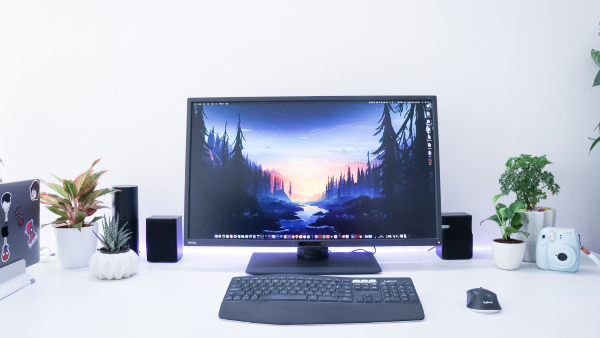How to Pack a Computer for Moving
Personal computers are expensive, delicate, and hard to fix. Though moving crews do their best to be careful, understanding how to package your electronics is the best way to ensure they arrive safely at your new home. Whether you own a laptop or desktop, this guide lays out the best way to pack a computer for moving.

Gather Moving Supplies
If you still have the original boxes and foam fittings, packing a computer is relatively simple. Otherwise, you’ll need to purchase new packing material. Because it’s safer and more convenient to ship computer components separately (see below), you’ll need one box for each item: monitor, keyboard, desktop, laptop, etc.
Electronics vary in size, you’ll need to rely on a combination of large, medium, and small boxes. No matter what you’re packing, make sure the box is large enough to fit the item and three inches of packing material on the top, bottom, and sides. You’ll also need:
- Anti-Static Bags
- Resealable Plastic Bags
- Packing Peanuts or Packing Paper
- Anti-Static Bubble Wrap
- Computer Bags
- Packing Tape
- Marker
While you can find moving boxes at your local hardware store, moving companies are a better source. Their boxes are reinforced with multiple layers of cardboard, for added strength. They even have access to units specifically designed to hold computer monitors, as well as other supplies you might not find at your local hardware store, such as corner foam padding.
Backup Your Data
Before doing anything, make sure your data is safe. Copy your important files onto an external hard drive or upload them to the cloud, or both. While it’s unlikely, hard drives have been known to become corrupted due to sudden jolts, temperature changes, or exposure to moisture. Creating a backup not only protects your photos, videos, and documents; it also provides peace of mind, knowing your information is safe and recoverable in the event something happens.
Prepare Your Computer
Shut off your computer and unplug the wires. You may want to take a picture of the wires first, so you have a reference when you reconnect the unit. Store the wires in plastic bags and label them with a marker, so you know what goes where during reassembly.
Next, wipe down the exterior housing of your computer and its components. Use canned air dusters to clear out hard to reach spaces, such as your keyboard. If you’re comfortable with computer hardware, then you may want to remove some of the large, internal components from your desktop, such as the hard drive or graphics card, and pack them in separate, anti-static bags for safekeeping.
Pack Each Component Separately
Desktops, keyboards, and monitors are sensitive to weight, pressure, and impact. Packing them together increases the chance of cracked screens, dented cases, and internal wear. On the other hand, packing them separately not only lowers the risk of damage, it also redistributes the weight of the entire system, making each package easier to load and carry.
Large items, like laptops, monitors, and desktop computers, should be covered in anti-static bubble wrap. Small items, such as speakers, should be placed in computer bags to protect them from dust and static electricity.
Next, add a layer of bubble wrap to the bottom of the box to create a cushion, then pour a layer of packing peanuts on top of it. Place the computer inside, along with its associated power cords and data cables, and fill the remaining space with packing peanuts or packing paper.
After sealing the box with packing tape, shake it slightly to see whether the contents shift. If there’s movement, open it up and add more peanuts or paper until it’s stable. Write “FRAGILE” on each side of the box and draw arrows indicating which side is up. Repeat the process with each component.
Transport Carefully
Packaging your computer protects it from shocks and vibrations, but there are a few other steps you can take to keep it safe during transport. Desktop towers are designed to sit upright, so don’t lay them flat or you'll place undue pressure on their internal components, potentially leading to long-term malfunctions.
And even though packing material provides some insulation, computers are still vulnerable to extreme temperatures. Heat can warp plastic or damage electronic circuits, while cold can cause condensation, shorting your electronics when you turn them on again. If you’re traveling through an area with harsh weather, consider transporting your computer in your car or a climate controlled van instead of a standard moving truck.
Reassemble and Power On
Once the move is complete, it’s time to unpack. Remove each item carefully from its box. Some packing peanuts will likely spill out in the process, so be prepared. After you’ve finished unboxing, take a moment to make sure you haven’t misplaced any wires or cables. It’s easy for a small bag to get lost in the packing material. Check for cracks, dents, and other visible damage before reconnecting your computer to the monitor, keyboard, speakers, and router. Then boot it up and make sure it performs as expected.
America’s Trusted Household Movers
North American Van Lines has helped homeowners relocate for more than 90 years. In addition to handling sensitive electronics, our full service moving teams also assist with planning, packing, shipping, storage, and final delivery - streamlining the entire process from start to finish. Make your move as smooth and easy as possible. Contact us today for a free quote!

